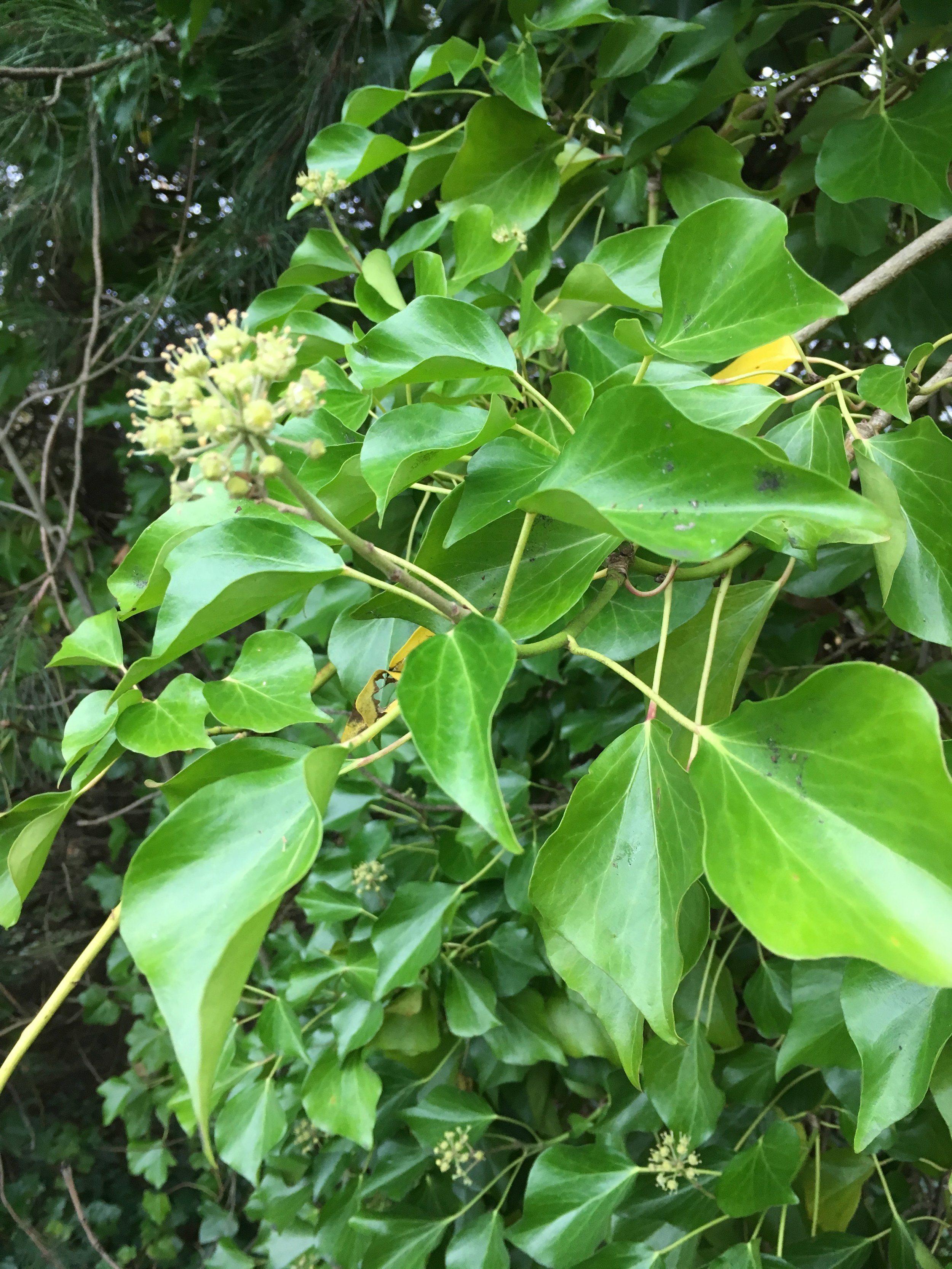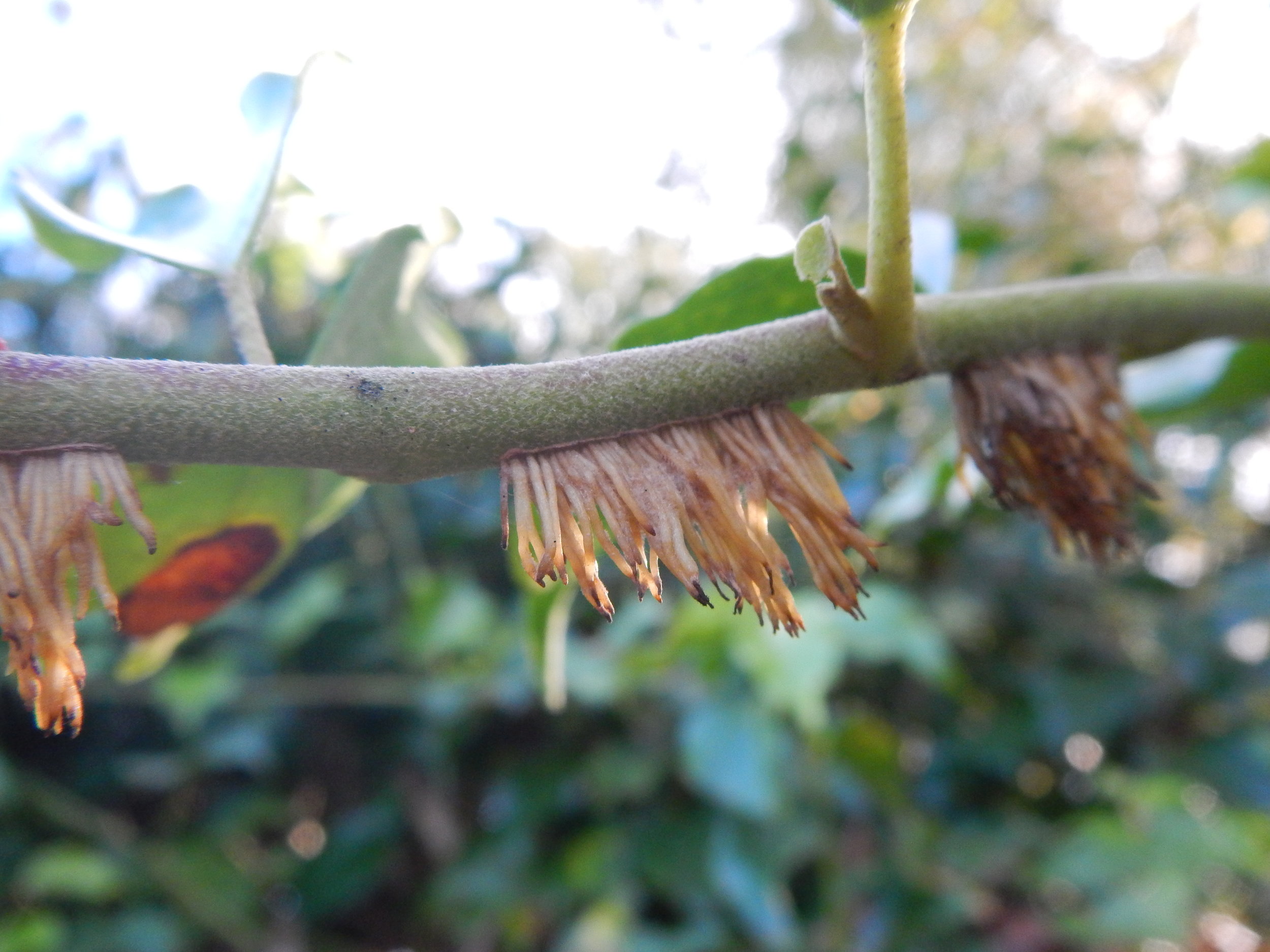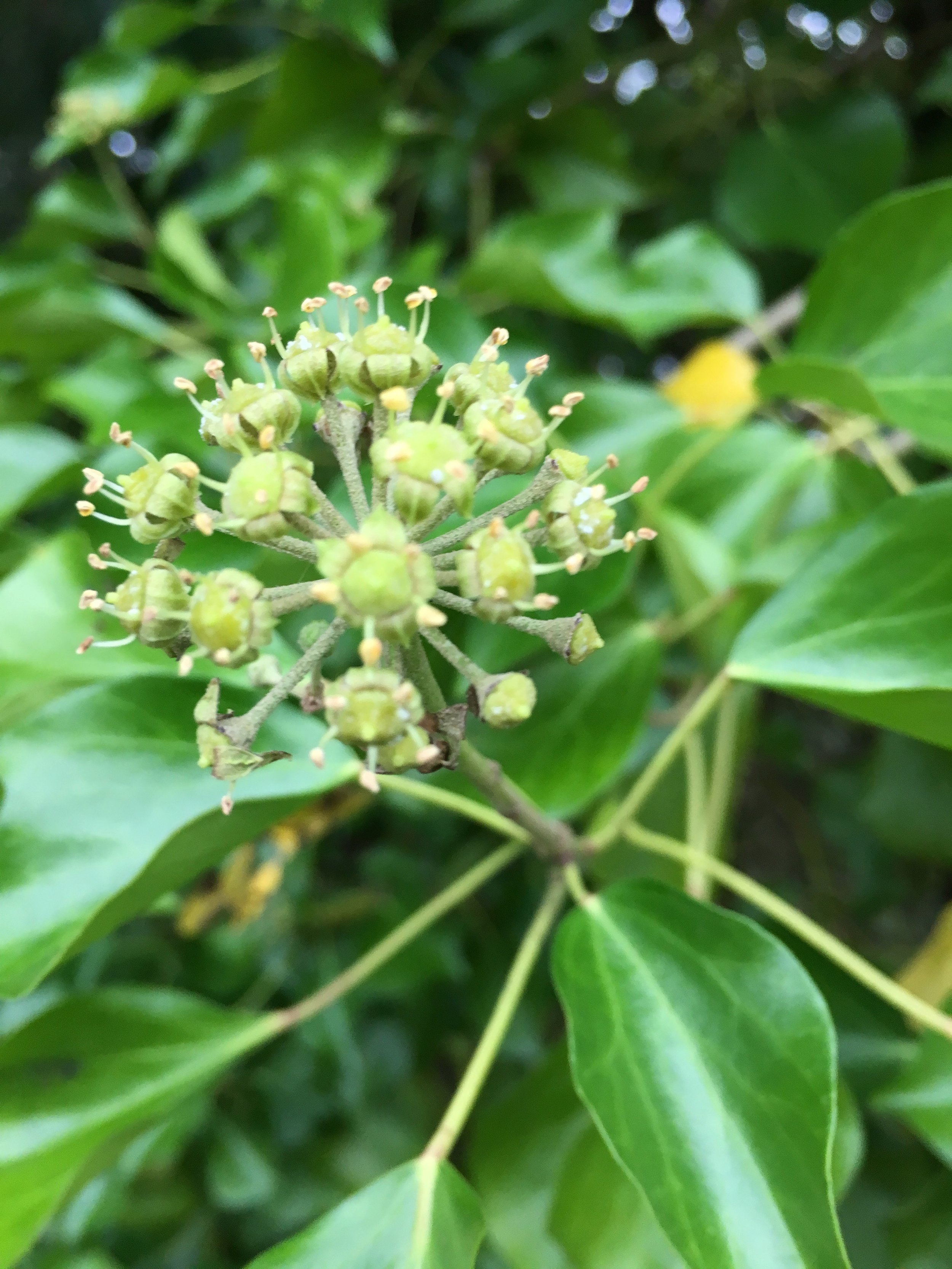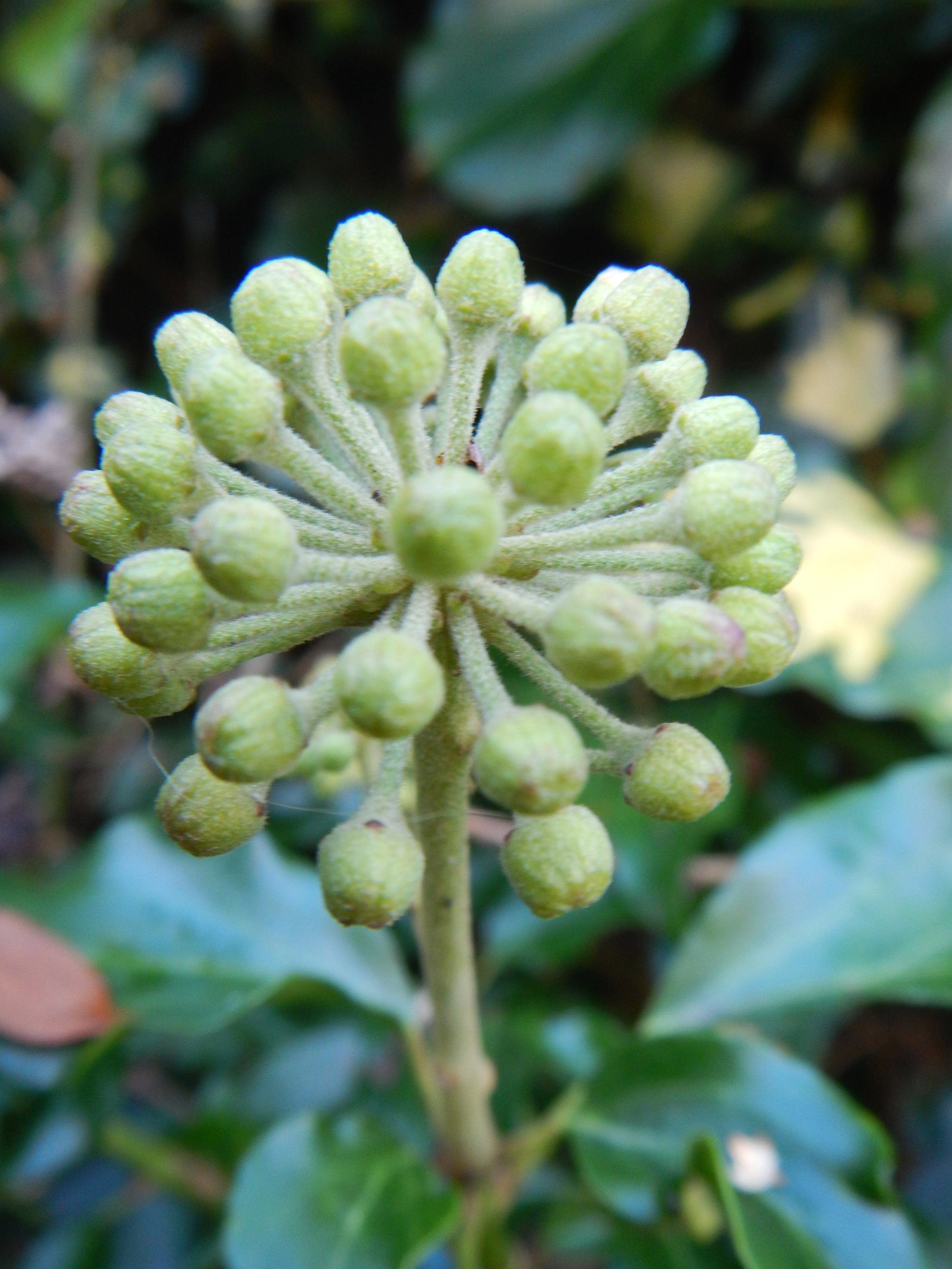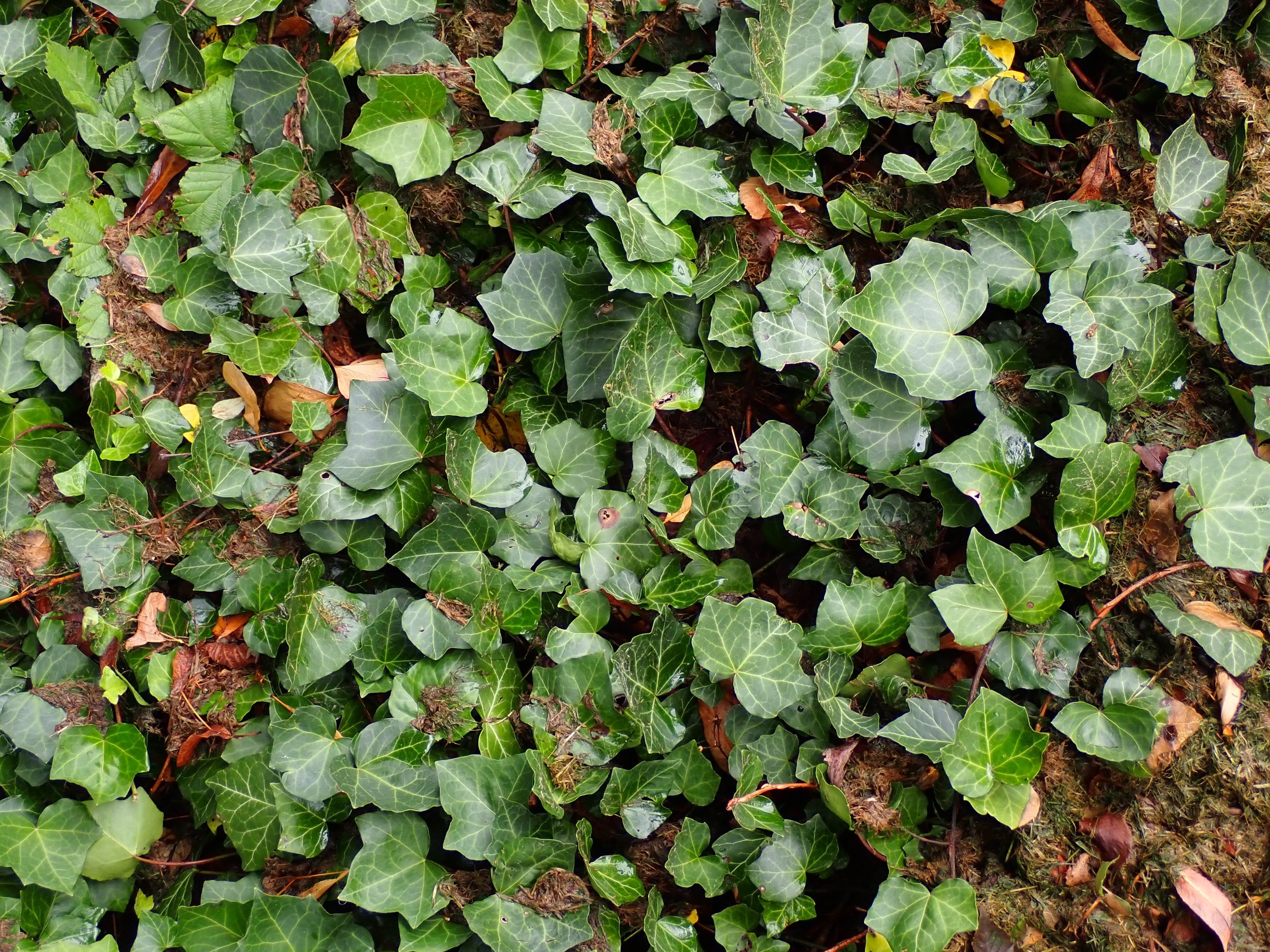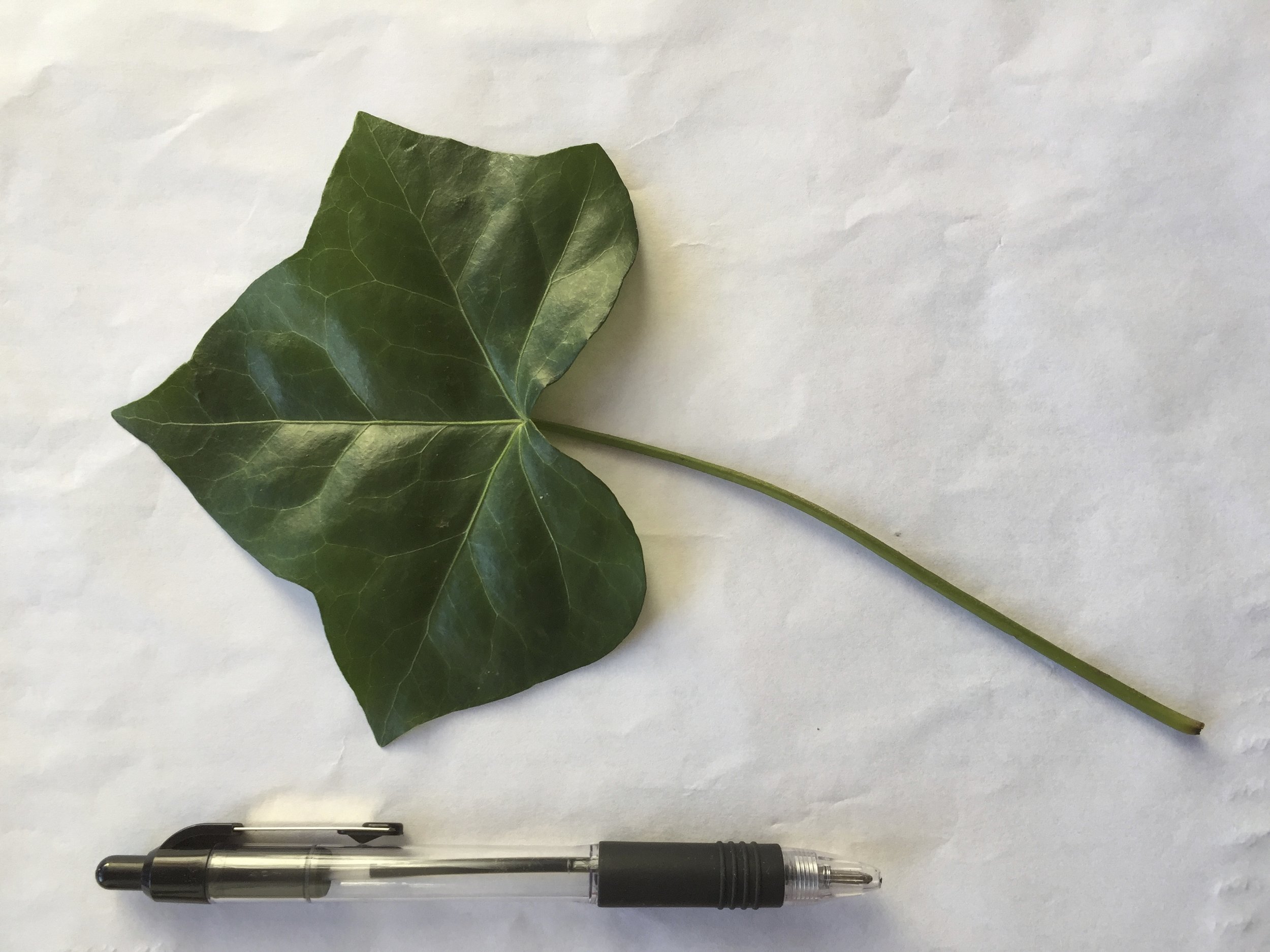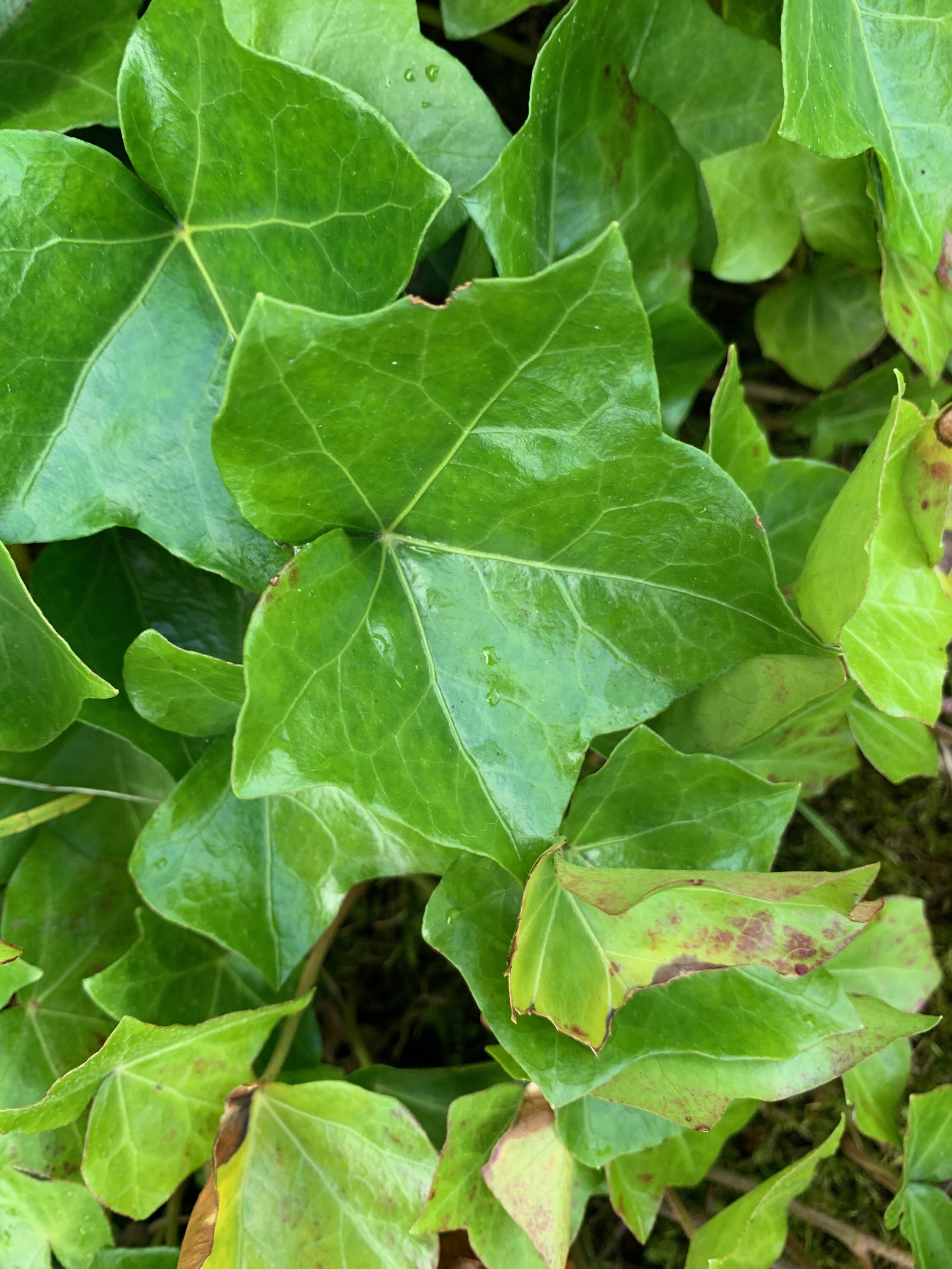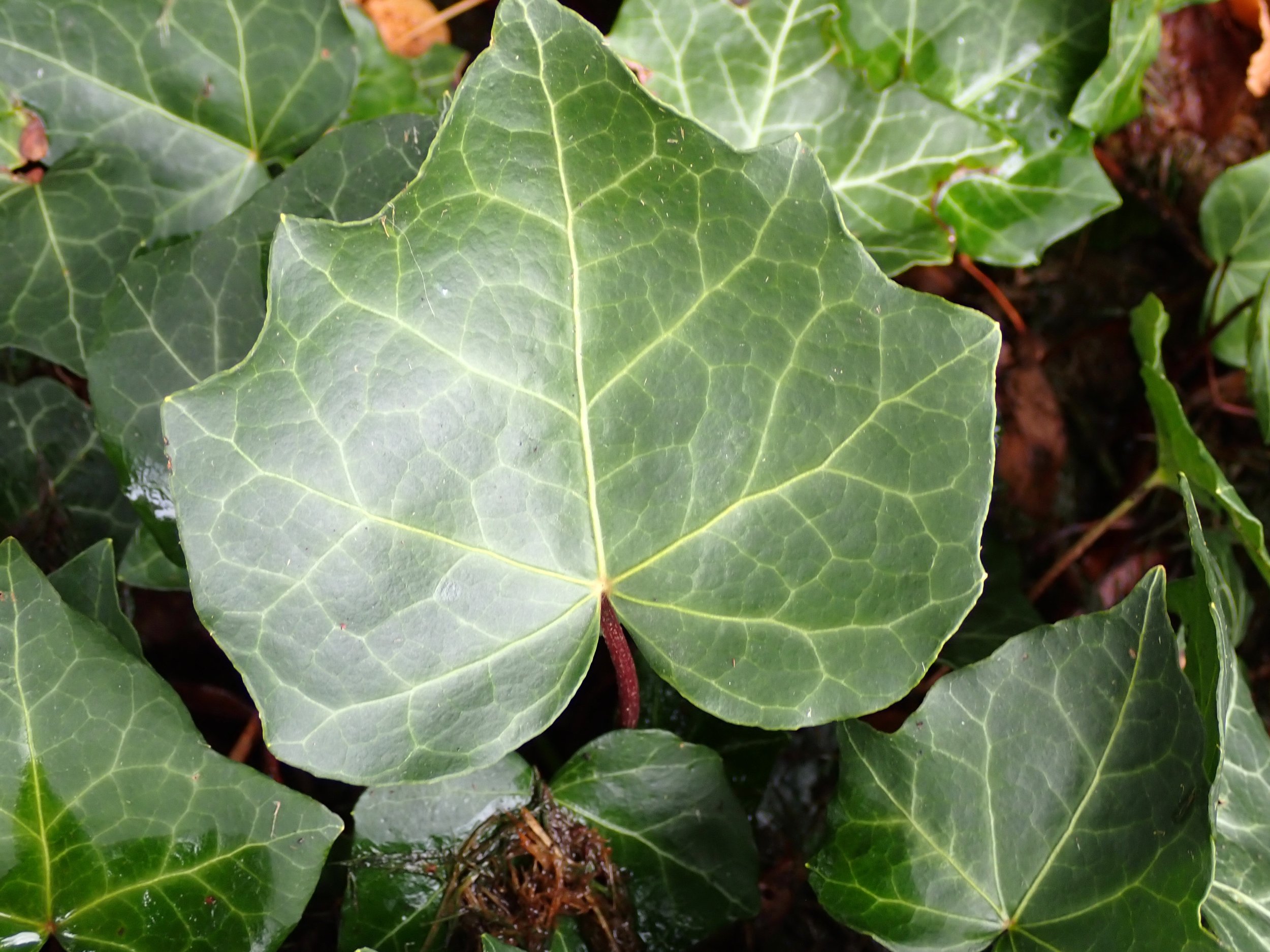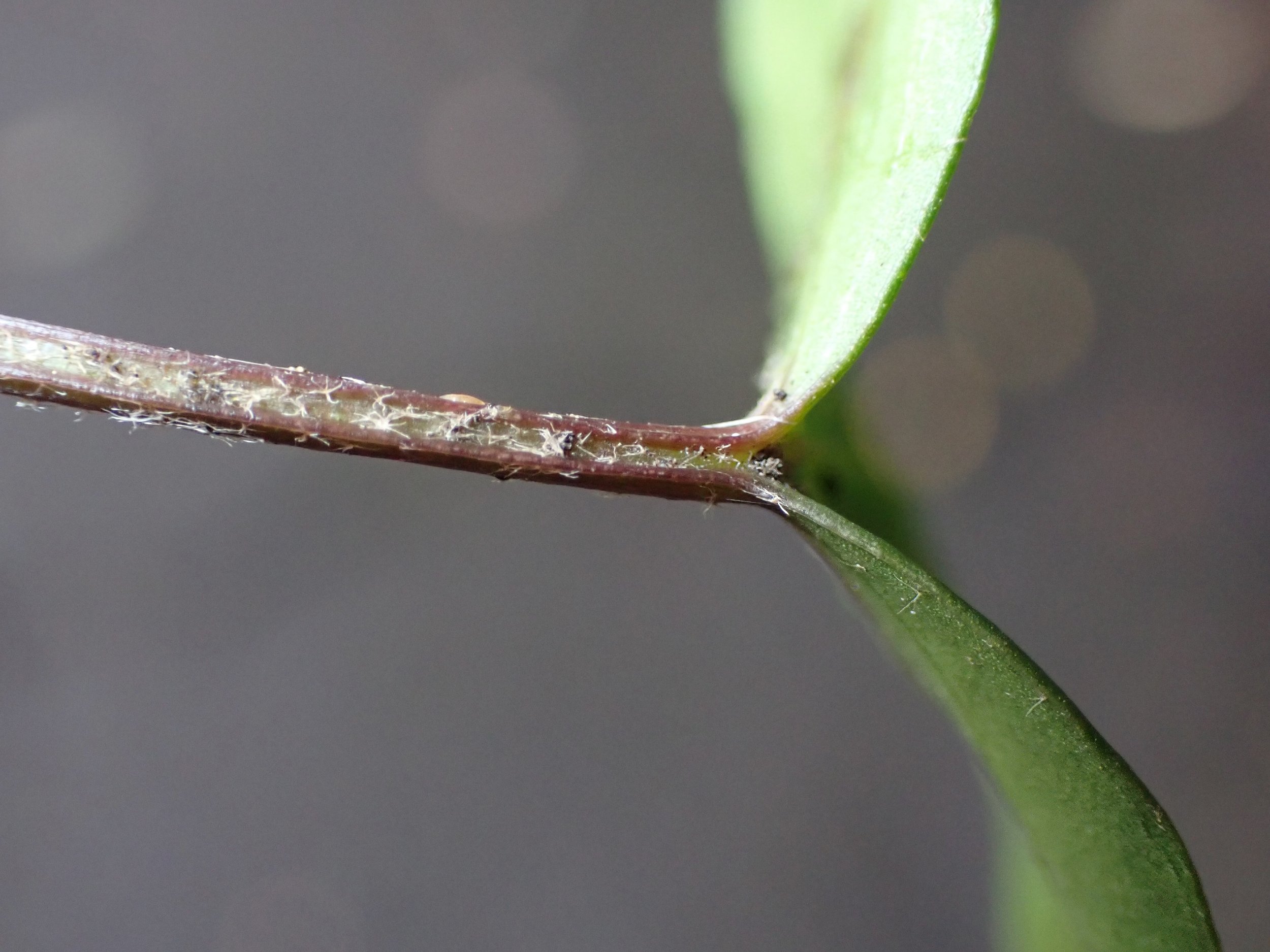Hedera species - Ivy
Ivy is a common plant. There are several common other species which can be distinguished in the field, but also confirmed by examining the patterns of the tiny stellate hairs on new growth stems. Most are Hedera helix, but in urban areas a cultivar, Hedera hibernica ‘Hibernica’ Irish Ivy, is also common.
Hedera helix Ivy
Common Ivy (H. helix) passes through many development phases from seedling to flowering foliage. The leaves are often dull until the fertile stage. They are often dark green, bronzing in cold, even turning black. Much smaller than those of Irish Ivy and most Atlantic Ivy, they become larger just before the flowering stage and are leathery in texture.
The odour of cut or bruised twigs or leaves of Common Ivy is found to be acrid and unpleasant to many people.
Hedera hibernica ‘Hibernica’ Irish Ivy
Irish Ivy (H. hibernica ‘Hibernica’) is an easy plant to spot. It passes directly from seedling leaves to the sub-fertile stage of foliage. It has uniform, large, glossy leaves, with short, broad lobes. The leaves do not open flat, so the light catches one half of each leaf. This Ivy can form cascades down cliffs or walls, or sheets over the ground – where this feature is eye-catching. Unlike Common Ivy foliage, it seldom bronzes in cold and Irish Ivy leaves are a fresh emerald.
Irish Ivy has a less strong odour, possibly because it’s at the nearly fertile phase when many characters such as running, climbing and phase-changing diminish.
Hedera hibernica Atlantic Ivy
Atlantic Ivy (H. hibernica) is only found on the western seaboard of the British Isles and is rare in vc77. On the whole, it has much larger in its leaves than Common Ivy but, if stressed by cutting winds. it can have H. helix sized foliage. It is probably as variable in leaf forms as Common Ivy. (Pictures awaited)
Looking at the hairs
In Common Ivy, the hairs are like a sea anemone – a little stalk with the rays like tentacles bristling in all directions. In very new leaves, when the new foliage at the shoot tips have barely drawn apart, these hairs mesh together, giving a bristling, fuzzy appearance. In both Irish Ivy and Atlantic Ivy the hairs lie flat on the leaf surface, like starfish on the seabed, and the rays look like lengths of spider’s web.
To check the hairs an 8× or 15× lens may be easier than a 20×, but try different ones and different degrees of light. It is not necessary to count the rays of the hairs to distinguish Common Ivy from Irish or Atlantic Ivy. Even with the naked eye it is possible to discern whether the hairs are raised away from the surface or lying flat against it.
This text is from Ivy confusions? by Alison Rutherford BSBI NEWS 152 | January 2023 page 28 - 30


